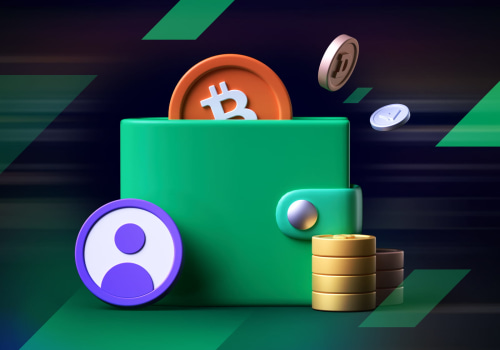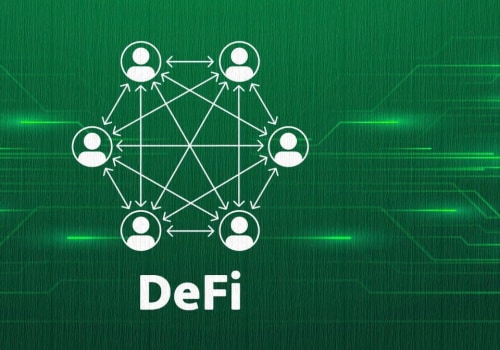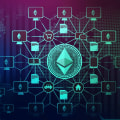In recent years, the world of digital art and collectibles has been turned upside down with the rise of NFTs. But what exactly are NFTs? And why have they become the latest craze in the world of cryptocurrency and blockchain technology? If you find yourself asking these questions, you're not alone. With all the buzz surrounding NFTs, it's important to have a clear understanding of what they are and how they work. In this comprehensive overview, we'll delve into the world of NFTs and uncover their true definition, as well as explore their potential impact on the art and collectibles market.
So buckle up and get ready to dive into the exciting world of NFTs. To start off, let's define NFTs. NFT stands for 'non-fungible token' and it refers to a unique digital asset that is stored on a blockchain. Unlike traditional cryptocurrencies like Bitcoin or Ethereum, which are interchangeable and hold the same value, each NFT is one-of-a-kind and cannot be replaced. This makes them highly valuable and sought after by collectors and investors. Now that we understand the basic definition of NFTs, let's dive deeper into their applications.
Many people are interested in NFTs because they offer a way to invest in the world of cryptocurrency without having to understand complex market trends and fluctuations. NFTs also provide a way for artists to monetize their digital creations, as they can be bought and sold on various marketplaces. In addition, NFTs have opened up possibilities for decentralized finance and the use of smart contracts, which can automate transactions and reduce the need for intermediaries. As for digital wallets and tokenization, these are crucial components in the world of NFTs. Digital wallets are used to store NFTs and other digital assets, while tokenization refers to the process of creating a unique digital representation of a real-world asset.
This allows for greater security and transparency in ownership, making it easier for investors and collectors to track their assets.
Exploring the World of NFTs
Now that we have a basic understanding, let's take a closer look at the world of NFTs. Non-fungible tokens, or NFTs, are unique digital assets that are stored on a blockchain. Unlike traditional cryptocurrencies, which are interchangeable and have the same value, NFTs are one-of-a-kind and cannot be replicated. This makes them valuable and highly sought after by collectors, investors, and artists alike. But what exactly can you do with an NFT? The possibilities are endless. Some popular applications include digital art, collectibles, virtual real estate, and even ownership of virtual items in video games.NFTs also allow for provenance and authenticity of digital assets, making them a game-changer for the art world. One of the most exciting aspects of NFTs is their potential to revolutionize the music industry. With NFTs, musicians can directly sell their music to fans, cutting out middlemen like record labels. This not only gives artists more control over their work but also allows them to earn more from their music. As more industries explore the potential of NFTs, we can expect to see even more innovative use cases emerge. From ticketing and event management to supply chain tracking and more, the possibilities are endless.
Investing in NFTs
If you're looking to invest in NFTs, here are some important things to consider. First and foremost, it's crucial to understand the basics of NFTs and how they function.As mentioned earlier, NFT stands for non-fungible tokens, which means that each token is unique and cannot be exchanged for another like item. This uniqueness is what gives NFTs their value and makes them desirable for collectors and investors. Next, it's important to research the various platforms and marketplaces where NFTs are bought and sold. Some of the most popular ones include OpenSea, Rarible, and Nifty Gateway. Each platform has its own set of rules and fees, so it's essential to familiarize yourself with them before making any investments. Additionally, it's crucial to understand the risks involved in investing in NFTs.
While they have gained a lot of attention and value in recent months, the market for NFTs is still relatively new and unregulated. This means that there is a higher risk of scams and fraud, so it's essential to do thorough research and only invest what you can afford to lose. Lastly, it's important to diversify your NFT portfolio just like any other investment. Instead of putting all your money into one specific NFT, consider spreading it out among various pieces to reduce your risk.
Digital Wallets and Tokenization
Digital wallets and tokenization are essential components of the world of NFTs. These concepts play a crucial role in the creation and trading of NFTs, making them an important aspect to understand for anyone interested in this emerging market.Digital wallets
are virtual storage spaces that hold your cryptocurrencies, including NFTs.They function similarly to a physical wallet, except that they exist in the digital world. When it comes to NFTs, digital wallets are necessary for storing and managing your unique digital assets.
Tokenization
is the process of converting a physical or digital asset into a token on a blockchain. In the case of NFTs, tokenization is what gives them their unique and non-fungible properties. Each NFT is represented by a unique token on the blockchain, making it one-of-a-kind and easily verifiable. Without digital wallets and tokenization, the world of NFTs would not be possible.These concepts enable the creation, ownership, and trading of NFTs, making them integral to the success and growth of this market.
Decentralized Finance and Smart Contracts
Decentralized finance (DeFi) is a term used to describe a new financial system that is built on blockchain technology. It aims to create a more open, transparent, and accessible financial system that is not controlled by any central authority. One of the key components of DeFi is the use of smart contracts, which are self-executing contracts with the terms of the agreement between buyer and seller being directly written into lines of code. These contracts run on the blockchain, making them immutable and transparent.Now, you may be wondering how NFTs fit into this world of decentralized finance and smart contracts. Well, NFTs have opened up a whole new realm of possibilities within DeFi. With NFTs, unique digital assets can be created, bought, and sold on the blockchain, without the need for intermediaries. This has led to the creation of decentralized marketplaces where users can trade NFTs with each other, creating a new economy within DeFi.
These NFTs can represent anything from digital art and collectibles to virtual real estate and in-game items. And because they are unique and traceable on the blockchain, they can hold significant value. The use of NFTs in DeFi has also allowed for the creation of new financial products such as decentralized loans and insurance. These products use NFTs as collateral, bringing more liquidity to the market and allowing for more diverse investment opportunities.
But perhaps the most exciting aspect of NFTs in DeFi is their potential to democratize finance. By removing the need for intermediaries and traditional financial institutions, individuals from all over the world can participate in this new financial ecosystem. This has the potential to empower communities and individuals who were previously excluded from traditional finance.
The Role of Blockchain Technology
Blockchain technology plays a crucial role in the creation and storage of NFTs. Here's how it all works. In conclusion, NFTs offer a unique and exciting opportunity for investors, creators, and collectors alike.With their ability to represent one-of-a-kind digital assets on the blockchain, NFTs have opened up a whole new world of possibilities for decentralized finance, smart contracts, and more. Whether you're interested in investing or simply want to learn more about this emerging technology, we hope this guide has provided you with a comprehensive overview of what NFTs are and how they work.







